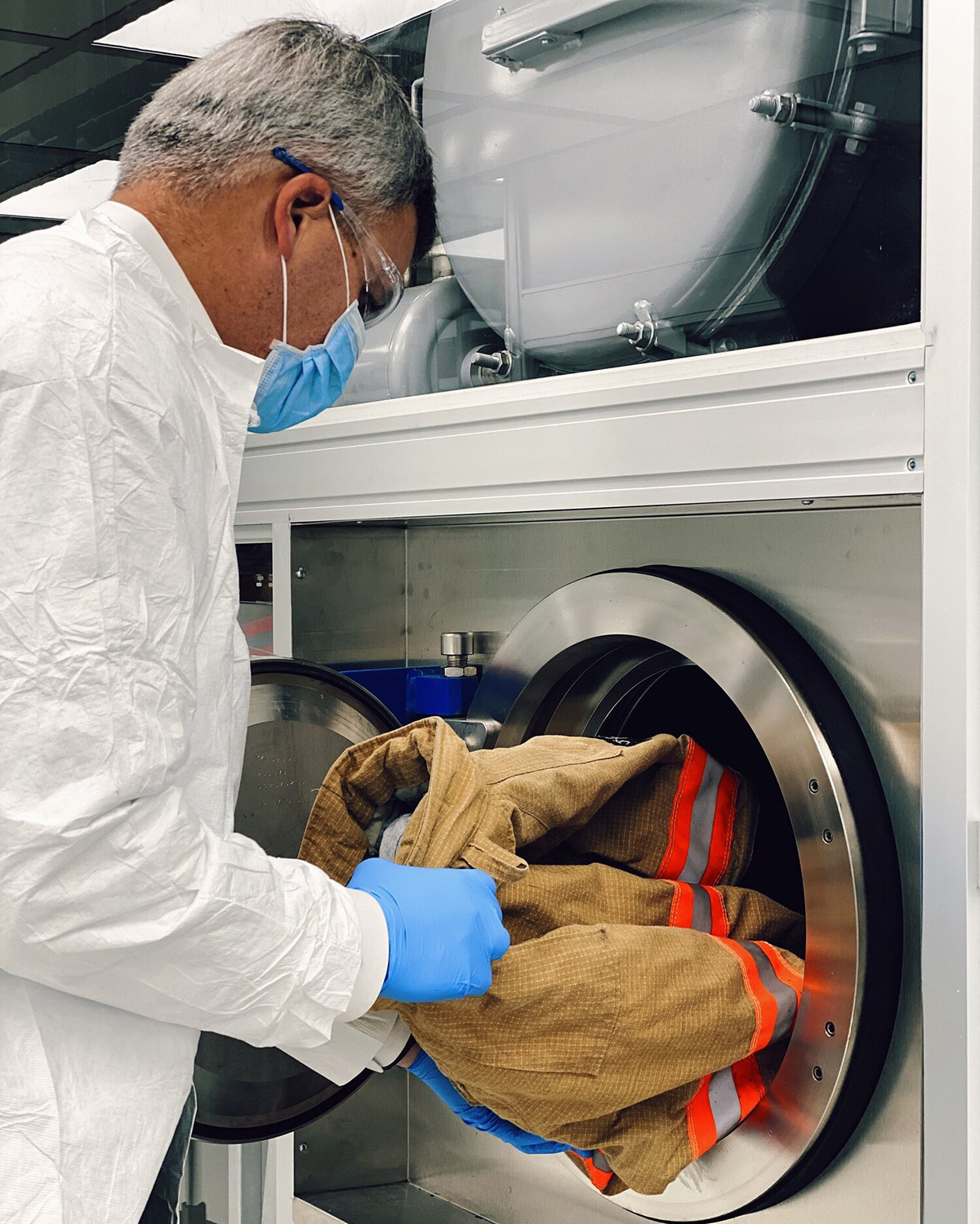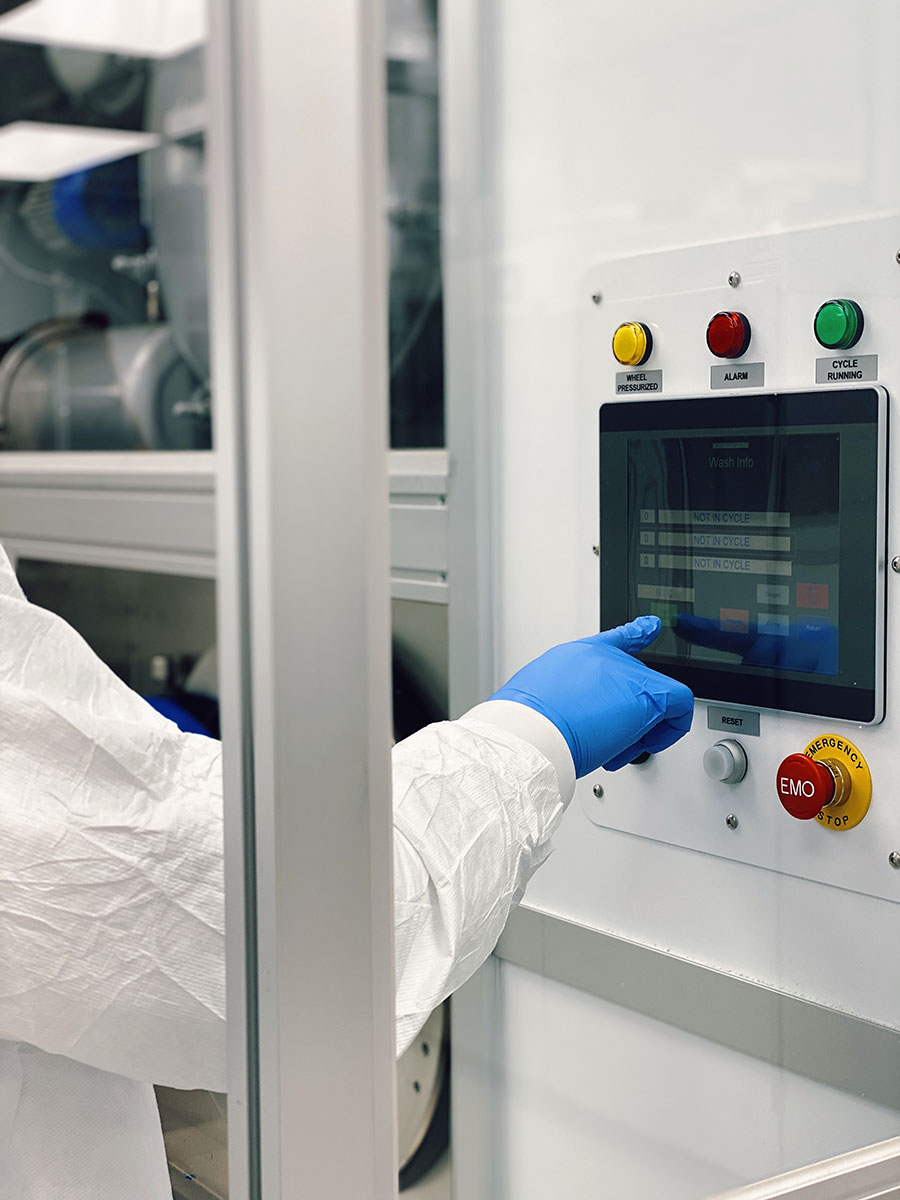By: Emergency Technical Decon Team
As summer temperatures rise, so do the hidden dangers facing firefighters. Most fire departments are vigilant about preventing heat exhaustion and dehydration during warmer months, but there’s another less visible, yet equally dangerous, threat that demands attention: increased chemical absorption through the skin due to heat, sweat, and contaminated gear.
This risk intensifies during summer operations, when crews are working longer, hotter shifts, and personal protective equipment (PPE) becomes a reservoir for harmful substances that cling to fabrics and transfer easily to the body through elevated skin permeability. Understanding how this process works—and how to mitigate it—could play a key role in preventing long-term health consequences like cancer.
The Summer Heat Effect: What Happens to Firefighters’ Skin?
In extreme heat, your body does what it’s supposed to: opens up pores and produces sweat to regulate internal temperature. But that natural process comes with a hidden cost.
When the skin is hot and wet, its barrier becomes more permeable, meaning it’s easier for harmful chemicals, gases, and particulate matter to absorb directly into the bloodstream through transdermal exposure. Studies from the CDC and NIOSH show that heat-stressed skin can absorb chemicals like benzene, formaldehyde, and PAHs at 3–5 times the normal rate.
What makes this worse? Contaminated gear.
Turnout gear is built to protect against heat and flames, but it’s not impenetrable to toxins. Over time, as it becomes contaminated by repeated fireground exposure, the gear itself can become a source of dangerous chemical reabsorption—especially in the summer when:
- Sweat mixes with embedded toxins, increasing their mobility
- Damp gear traps chemicals next to the skin for longer periods
- Elevated body temperature accelerates absorption rates
Your PPE Could Be Working Against You
While firefighters may trust their gear to protect them, PPE that is not regularly and thoroughly cleaned becomes a ticking time bomb. The longer it sits between washes—or the more times it goes into a fire without proper decontamination—the greater the chemical load it carries.
And while some departments rely on traditional washer-extractors, these methods often only remove 50–70% of contaminants, leaving behind PFAS, heavy metals, hydrocarbons, and more. That’s why forward-looking departments are turning to advanced decontamination systems like Liquid CO2+, which delivers validated removal rates of 84% PFAS and 99.9% SVOCs—far beyond the capability of water-based cleaning.
Summer Decon Strategy: Steps Departments Can Take
Fire departments don’t need to wait for standards to mandate better practices. Here are several actions you can take now to protect your crews this summer:
1. Increase Gear Cleaning Frequency
Hotter months mean higher sweat production and more rapid saturation of PPE. Increase the frequency of gear decontamination and rotate clean sets more often to reduce toxic buildup.
2. Adopt Field Gross Decon as Standard Practice
Field decon using wipes or rinse stations should be a routine part of post-fire protocol. Even small efforts can make a significant difference in reducing chemical contact during peak skin absorption windows.
3. Emphasize Base Layer Hygiene
Don’t overlook what’s worn underneath. Hoods, gloves, and base layers are often saturated with sweat and toxins. Clean or replace them more frequently in summer conditions.
4. Invest in Validated Cleaning Methods
Consider outsourcing gear to a facility using advanced cleaning like Liquid CO2+, which has been independently tested to remove a wider spectrum of carcinogenic compounds. ETD offers this option through ISP-certified centers.
5. Prioritize Education and Culture Shift
Ensure firefighters understand the science behind heat, sweat, and absorption. When people know the risks, they’re more likely to adopt better practices—including not storing dirty gear in vehicles or taking it home.
6. Create Cool Down Protocols
Set up shaded rest areas, cool zones, and ensure gear is doffed quickly after use. The longer hot, contaminated gear stays on, the more risk there is for absorption.
Heat Doesn’t Just Hurt in the Moment—It Lingers
Chemical exposure is cumulative. Firefighters may not feel the immediate impact of toxin absorption on a hot day, but the long-term effects—cancer, organ damage, reproductive harm—are well-documented. Summer may be just a season, but the risks it poses can last a lifetime.
Want to learn more about summer decon strategies or gear cleaning options? Contact the ETD team or schedule a consultation today.



